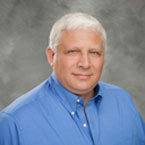 Several weeks ago we touched on the importance of choosing the right equipment for 3D laminating. Today we’ll be finishing up a more detailed explanation of the four most common press types with an analysis of vacuum formers. (See 3D Laminating Glossary.)
Several weeks ago we touched on the importance of choosing the right equipment for 3D laminating. Today we’ll be finishing up a more detailed explanation of the four most common press types with an analysis of vacuum formers. (See 3D Laminating Glossary.)
Vacuum formers are the least complex of the 3D laminating systems. Whereas bladder, membrane and membrane-less presses all incorporate positive pressure to help form the 3D laminate into detailed profiles, vacuum formers rely solely on atmospheric pressure. Though a membrane is optional, its only purpose is to act as a heating blanket and/or a security blanket should holes form in the 3DL. Since there is not a sealed chamber above the membrane or 3DL, there is no way to boost pressure above local atmospheric pressures. It is also not possible to introduce cold compressed air over the 3DL to speed up the cooling process.
 It should be noted that not all vacuum formers are suitable for 3D laminating. The diagram left shows the typical pressing chamber in systems designed for this process. A sealed vacuum chamber is formed by clamping a full sheet of 3DL over a vacuum table and completely sealing around the edges. Heat is radiated either directly over the 3DL or over the membrane, which then transfers the heat into the laminate. After the 3DL has reached the required temperature to form over the substrate and activate the adhesive, vacuum is then introduced in the chamber beneath the laminate, causing it to form around the substrate. The heat will usually continue to radiate over the 3DL for a pre-determined period of time to allow it to form more completely into any interior profile as the material reheats. Heat is then eliminated and the laminate is allowed to cool under vacuum.
It should be noted that not all vacuum formers are suitable for 3D laminating. The diagram left shows the typical pressing chamber in systems designed for this process. A sealed vacuum chamber is formed by clamping a full sheet of 3DL over a vacuum table and completely sealing around the edges. Heat is radiated either directly over the 3DL or over the membrane, which then transfers the heat into the laminate. After the 3DL has reached the required temperature to form over the substrate and activate the adhesive, vacuum is then introduced in the chamber beneath the laminate, causing it to form around the substrate. The heat will usually continue to radiate over the 3DL for a pre-determined period of time to allow it to form more completely into any interior profile as the material reheats. Heat is then eliminated and the laminate is allowed to cool under vacuum.
If you’ve read my previous blogs you probably think I don’t have much good to say about vacuum formers. This simply is not true. The biggest problem with vacuum formers is that many have simply overestimated what they are capable of, releasing product that is prone to failure from the beginning.
Vacuum formers are limited to atmospheric pressure. At sea level this is just under 15 psi. A positive pressure system can apply three to five times that amount of pressure, if not more, to help form the 3DL into interior and edge profiles. This additional pressure leads to greater and more consistent definition over detailed profiles. The inconsistent definition from vacuum formers has led to the use of dangerous tricks like blowing hot air over a profile by hand while vacuum is still applied. This is a process that is not controllable, repeatable, and the quality is not verifiable without destroying the part.
With its limited pressure capacity and no compressed air cooling cycle, vacuum formers are not designed to do difficult profiles, grommet holes, or high production. Raised panel cabinet doors and logos should be limited to gentle rolling profiles in order to assure that the product can be produced repeatedly at a high quality level.
The one advantage vacuum formers have over the typical positive pressure press is flexible chamber depth. Positive pressure systems usually have an enclosed chamber of about 2.25 inches. When using a 1/2- to 3/4-inch pedestal, that leaves only about 1.5 inches left for a part. Vacuum formers allow for much thicker parts since there is usually several inches between the 3D laminate and the heat source. However, parts thicker than 1.5 inches are pushing the limits of most 3D laminates. Multiple tests should be done before approving a design that goes beyond that.
Next time we’ll be looking at profiles in greater detail and learn how to design for success. After all, you know what they say about an ounce of prevention.
Read previous blogs by Bill Formella






Have something to say? Share your thoughts with us in the comments below.